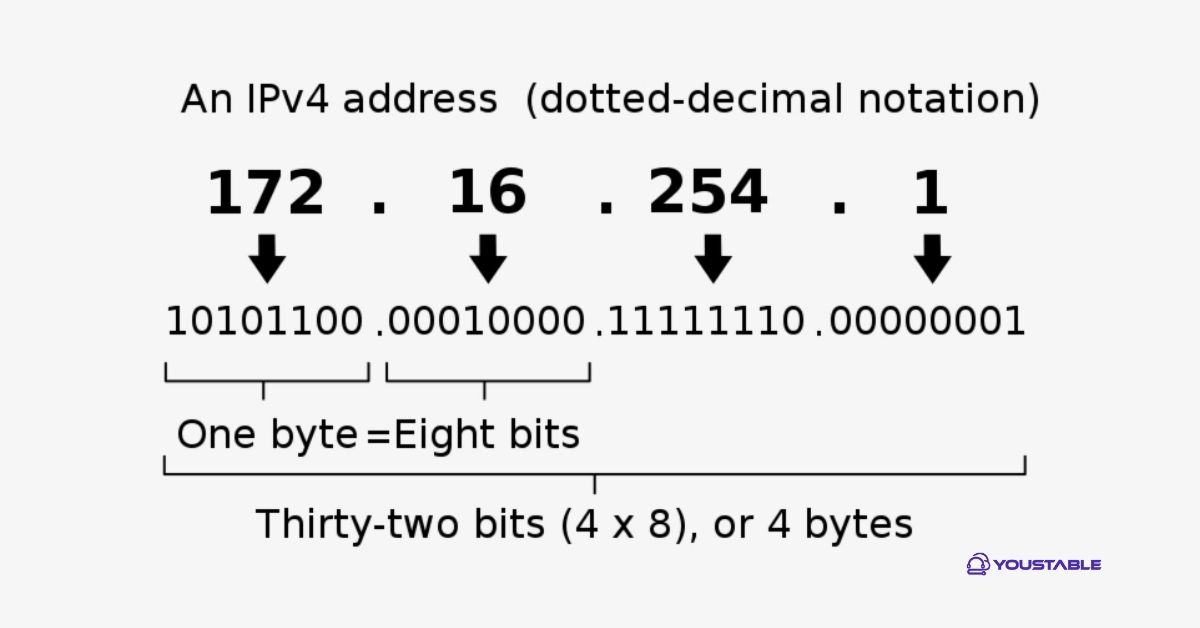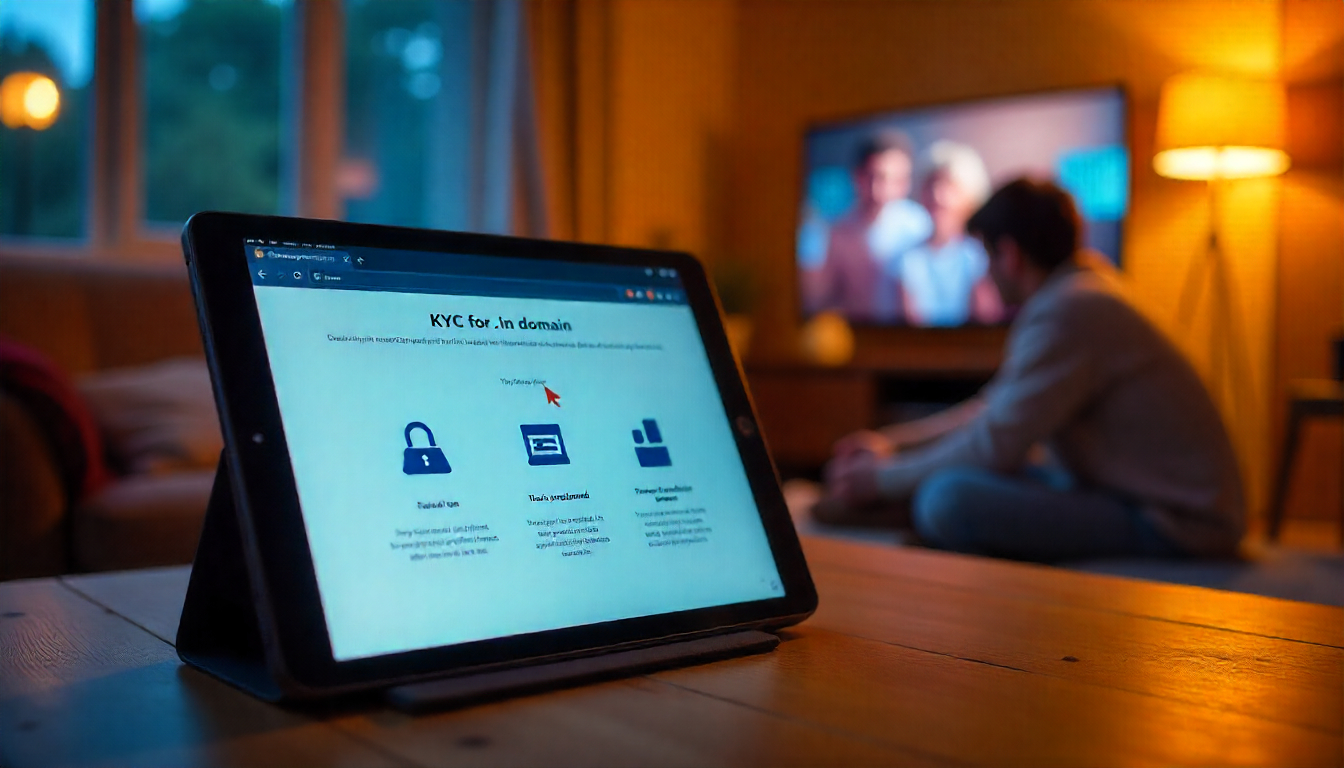The Internet Protocol version 4 (IPv4) is one of the core protocols that enable the functioning of the Internet and private networks. IPv4 is used to assign a unique address to each device connected to a network. An IPv4 address is typically written as four decimal numbers separated by periods (e.g., 192.168.1.1), with each number ranging from 0 to 255.
IPv4 uses a system called “address classes” to manage the allocation of these addresses efficiently. This article explains the different IPv4 address classes—A, B, C, D, and E—and their specific purposes in networking.
What is an IPv4 Address?
An IPv4 address is a unique number assigned to every device that connects to the Internet or a computer network. It functions similarly to a home address for your device, whether it’s a computer, smartphone, or tablet, allowing it to communicate with other devices on the network.
An IPv4 address is written as four numbers separated by periods (e.g., 192.168.1.1), with each number ranging from 0 to 255. The address is divided into two parts:
- NID (Network ID): 8 bits
- HID (Host ID): 24 bits
This allows for 256 total networks (28) and up to 16 million hosts per network (224).
The primary purpose of an IPv4 address is to identify devices on a network and ensure that data sent from one device reaches its correct destination.
Example: When you type a website URL into your browser, your device uses the IPv4 address to connect to the server hosting the website.
IPv4 addresses can be written in two notations:
- Dotted Decimal Notation
- Hexadecimal Notation
Dotted Decimal Notation:

- Each segment (byte) in the address ranges from 0 to 255.
- There should be no leading zeroes in any segment (e.g., 054 is incorrect, 54 is correct).
Hexadecimal Notation:
Hexadecimal notation is an alternative way to represent IPv4 addresses, using a base-16 system. Instead of the usual decimal format (base-10), hexadecimal uses 16 digits: 0-9 and A-F. This format is more compact and efficient for representing long binary strings, but it is less commonly used compared to dotted decimal notation. It provides a concise representation of IP addresses for easier manipulation in network settings.
Need for Classful Addressing
Classful addressing was an early method to allocate and manage IP addresses based on fixed classes, simplifying IP address distribution. Here are some key points:
- Simplified Routing: Network equipment like routers could easily handle fixed classes, speeding up the routing process.
- Scalability: Larger networks could use Class A or B addresses, while smaller networks use Class C.
- Uniform Network Protocols: Classful addressing allowed for standardized address ranges, making network devices compatible across different platforms.
- Cost-Effective: It supported early internet expansion by simplifying management, avoiding the complexity of subnetting schemes.
While classful addressing had its limitations, it laid the groundwork for IP address distribution in the early internet days.
Check Out | Fixing the “Server IP Address Could Not Be Found” Error
What Are IPv4 Address Classes?

IPv4 address classes define different types of IP address ranges based on the intended use and the size of the network. These classes are crucial for organizing the vast range of available IP addresses. There are five main IPv4 address classes: A, B, C, D, and E.
- Class A, B, and C are used for public and private networks.
- Class D is reserved for multicast communication.
- Class E is reserved for experimental purposes.
Each class has its unique range and is used for specific purposes, which will be explained in the following sections.
Class A IPv4 Address
Class A IPv4 addresses are part of the original IP address classification system, designed for networks requiring a substantial number of host addresses. This class provides a vast address space, allowing for over 16 million hosts within a single network. It is typically used by large organizations, internet service providers (ISPs), and in private network configurations. Class A addresses play a crucial role in supporting global infrastructure and scalable networks.
- Range:
1.0.0.0to127.255.255.255 - Purpose: Ideal for large networks with many connected devices.
- Default Subnet Mask:
255.0.0.0(or /8) - Number of Hosts: Over 16 million host addresses.
- Real-World Use: Used by major corporations, government organizations, and universities.
Example: 10.0.0.0 (commonly used in private networks).
Class B IPv4 Address
Class B IPv4 addresses are designed for medium to large-sized networks that need a moderate number of host addresses. They offer a balance between the address space required for larger networks and the efficiency of address allocation. Class B addresses are commonly used by universities, large businesses, and some smaller ISPs. The Class B address space is more restrictive than Class A, but it still provides ample room for growth.
- Range:
128.0.0.0to191.255.255.255 - Purpose: Suitable for medium to large-sized networks.
- Default Subnet Mask:
255.255.0.0(or /16) - Number of Hosts: Over 65,000 host addresses.
- Real-World Use: Used by universities, large organizations, and some internet service providers.
Example: 172.16.0.0 (commonly used for private networks).
Class C IPv4 Address
Class C IPv4 addresses are used for smaller networks that require fewer host addresses. This class is ideal for smaller businesses or organizations with a limited number of devices connected to their network. Class C provides a more efficient allocation of IP addresses for networks where large-scale expansion is not necessary. It is the most commonly used address range for private networks and small-scale internet services.
- Range:
192.0.0.0to223.255.255.255 - Purpose: Ideal for smaller networks with fewer devices.
- Default Subnet Mask:
255.255.255.0(or /24) - Number of Hosts: Up to 254 host addresses.
- Real-World Use: Used by small businesses, home networks, and private networks.
Example: 192.168.1.0 (commonly used for private networks).
Class D IPv4 Address( For Multicast)
Class D IPv4 addresses are reserved for multicast groups, which allow data to be sent to multiple destinations simultaneously. This class is not used for regular network host addresses but is rather employed in specific applications like streaming media, video conferencing, or other group communication services. Class D addresses are essential for efficient data distribution to a group of receivers.
- Range:
224.0.0.0to239.255.255.255 - Purpose: Used for multicast communication to multiple destinations.
- Default Subnet Mask: Not applicable (multicast addresses don’t require a subnet mask).
- Number of Hosts: Not relevant, as it is used for multicast groups.
- Real-World Use: Used for streaming, video conferencing, and other group communications.
Example: 224.0.0.1 (used for network management, multicast).
Class E IPv4 Address (Reserved for Experimental Use)
Class E IPv4 addresses are reserved for experimental purposes and are not used in normal network operations. These addresses are typically used for research, testing, and future technologies that may require a vast address space. Class E addresses are not assigned to devices or networks and are essentially reserved by the IETF for potential future use.
- Range:
240.0.0.0to255.255.255.255 - Purpose: Reserved for experimental or future use.
- Default Subnet Mask: Not applicable.
- Number of Hosts: Not relevant, as these addresses are not used for regular network communications.
- Real-World Use: Primarily used for testing and experimentation by the IETF.
Example: 240.0.0.1 (reserved for experimental purposes).
Differences Between Class A, B, C, D, and E
Here’s a quick comparison of the key features of the five IPv4 address classes:
| Class | Range | Number of Hosts per Network | Purpose |
|---|---|---|---|
| Class A | 1.0.0.0 to 127.255.255.255 | Over 16 million | Large networks, like corporate or government networks. |
| Class B | 128.0.0.0 to 191.255.255.255 | Up to 65,534 | Medium-sized networks, such as universities and businesses. |
| Class C | 192.0.0.0 to 223.255.255.255 | Up to 254 | Small networks, like home or small office networks. |
| Class D | 224.0.0.0 to 239.255.255.255 | N/A (Multicast) | Used for multicasting to multiple receivers. |
| Class E | 240.0.0.0 to 255.255.255.255 | N/A | Reserved for experimental or future use. |
Why Understanding IPv4 Classes is Important
Understanding the different IPv4 address classes is crucial for network administrators, developers, and IT professionals. It helps in:
- Efficient IP address allocation: By selecting the appropriate class, organizations can ensure they use IP addresses effectively without wasting them.
- Subnetting and network design: Knowing the different classes allows for more efficient network segmentation, optimizing the distribution of addresses within subnets.
- Network planning: By understanding the address classes, network administrators can choose the right range to meet the needs of their network.
Conclusion
IPv4 address classes—A, B, C, D, and E—serve different purposes depending on the size of the network and the application. Class A, B, and C are used for public and private networks, with Class A supporting the largest networks and Class C the smallest. Class D is reserved for multicast communication, and Class E is experimental. While the internet moves toward IPv6 due to the exhaustion of IPv4 addresses, understanding these address classes remains fundamental for managing existing IPv4 networks effectively.


